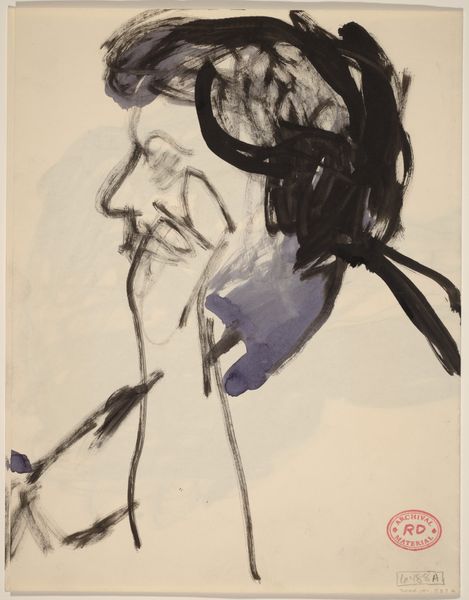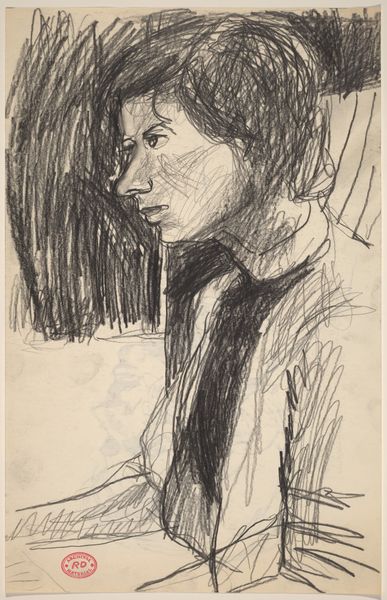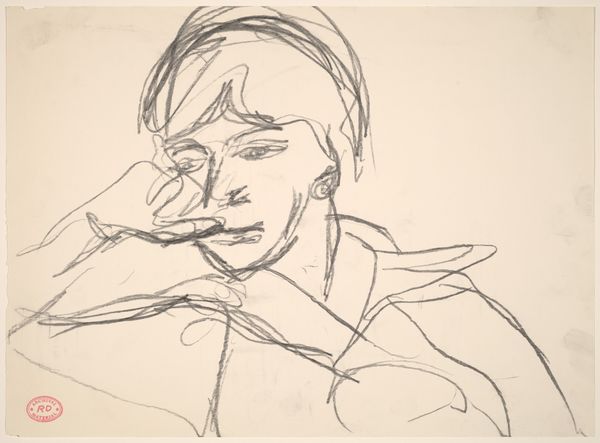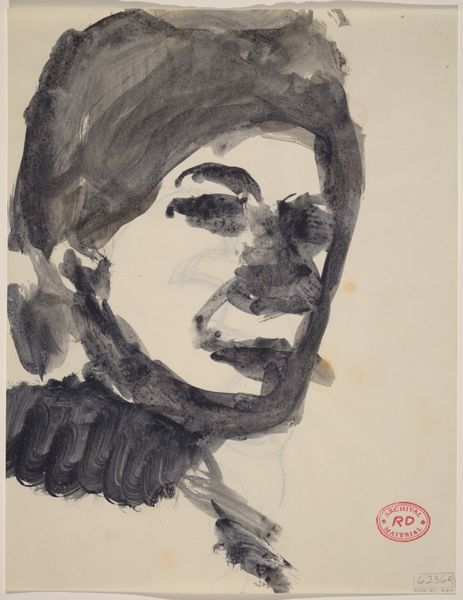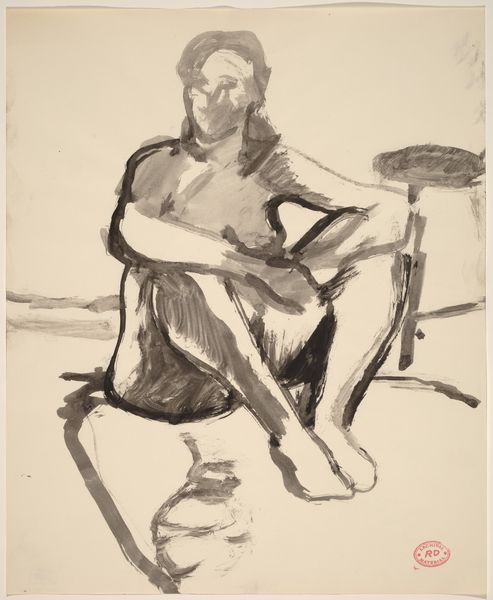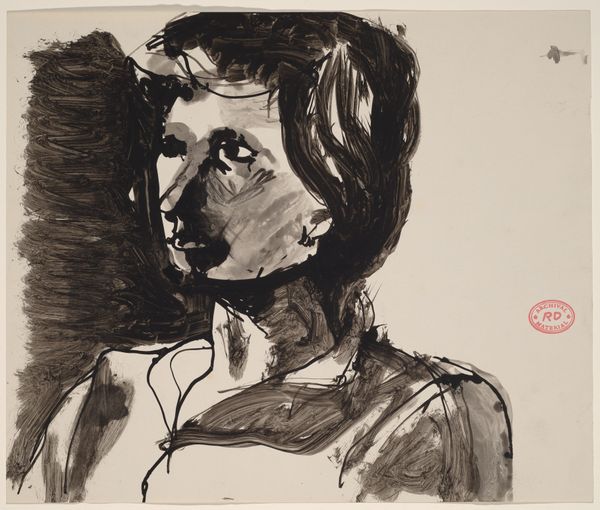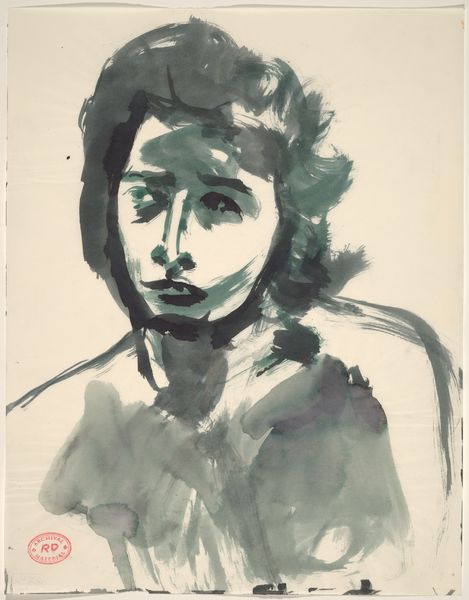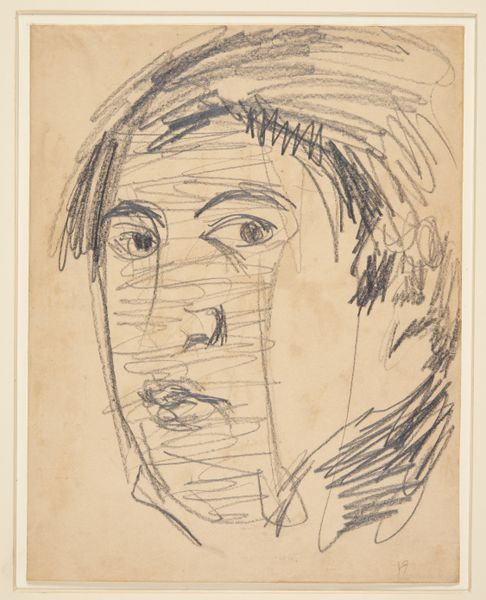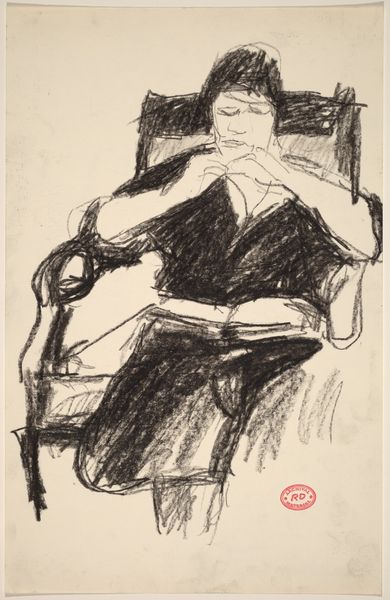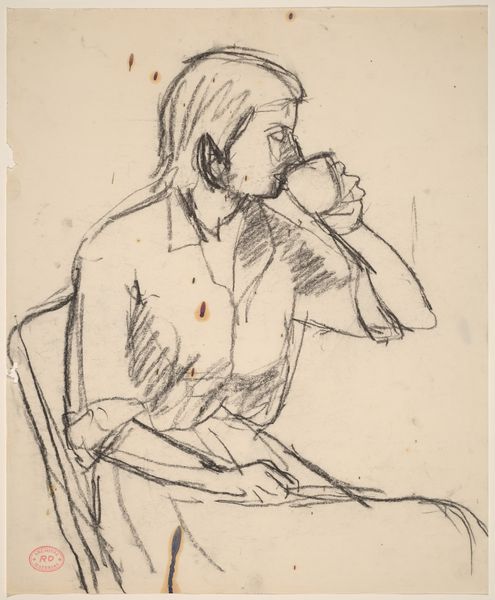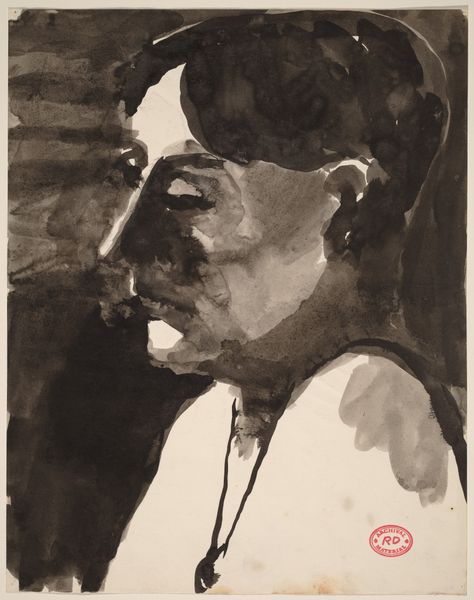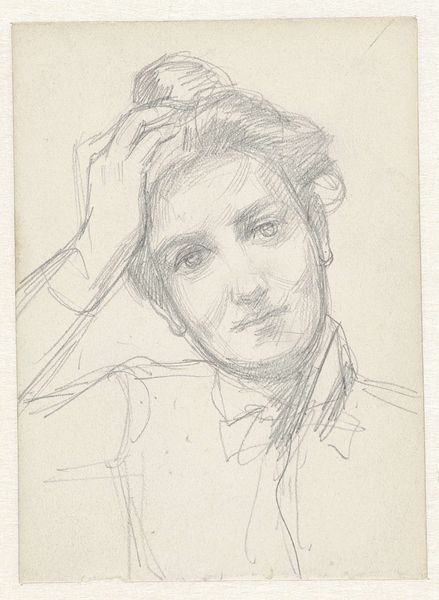![Untitled [woman resting her head on her left hand] by Richard Diebenkorn](/_next/image?url=https%3A%2F%2Fd2w8kbdekdi1gv.cloudfront.net%2FeyJidWNrZXQiOiAiYXJ0ZXJhLWltYWdlcy1idWNrZXQiLCAia2V5IjogImFydHdvcmtzLzcwZTMxODY1LTg1Y2ItNGNiNi04NDUxLTgxMTNkN2U5Mjc0NC83MGUzMTg2NS04NWNiLTRjYjYtODQ1MS04MTEzZDdlOTI3NDRfZnVsbC5qcGciLCAiZWRpdHMiOiB7InJlc2l6ZSI6IHsid2lkdGgiOiAxOTIwLCAiaGVpZ2h0IjogMTkyMCwgImZpdCI6ICJpbnNpZGUifX19&w=3840&q=75)
Untitled [woman resting her head on her left hand] 1955 - 1967
0:00
0:00
#
bay-area-figurative-movement
Dimensions: overall: 43.2 x 27.6 cm (17 x 10 7/8 in.)
Copyright: National Gallery of Art: CC0 1.0
Curator: Well, isn't that a mood? Stark black ink on what looks like cream paper, a woman lost in thought, or maybe just bored out of her skull? Editor: I find the looseness quite compelling; there’s a certain unfinished quality. We're looking at Richard Diebenkorn's "Untitled [woman resting her head on her left hand]," created sometime between 1955 and 1967. Curator: Unfinished is an interesting way to put it. I mean, is any drawing ever truly finished? It’s the feeling that hits me. A sort of beautiful weariness, maybe even a little disdain? Editor: Right, the gestural strokes evoke an intimacy, a glimpse into the artist’s process. Diebenkorn’s roots are deep in abstract expressionism, but then he pivots toward figurative work. You can almost feel him wrestling with those impulses. Curator: I like the wrestling image. Makes it more human, you know? Like he's not just depicting a woman, he's grappling with what it means to *depict* a woman. It's more than meets the eye. Is this just a simple portrait, or something more profound? Editor: Precisely. His relationship with figuration has been much discussed. Considering Diebenkorn's focus on domestic settings in his later representational art, and with Abstract Expressionism so heavily focused on male experience, one can imagine the impact of Diebenkorn pointing his gaze at the domestic and, primarily, at women. It certainly contributes to his significance in postwar American art. Curator: Exactly. A counterpoint. Maybe she’s thinking about the weight of expectations, the limited roles offered. Perhaps the casual pose actually speaks volumes. It's about power dynamics and the silent rebellion against them. Editor: Perhaps we are giving her too much credit. Considering his engagement with modernism more generally, she could simply represent a model sitting for a drawing. It is fascinating how an artwork like this can raise so many pertinent, albeit, interpretative questions. Curator: True, true, overthinking is my Olympic sport. Editor: As an art historian, it's certainly one of mine too! All things considered, its ambiguous qualities create the drawing's enduring impact, don’t you think? Curator: For sure, makes me want to grab some ink and just let it flow. There is more here than just portraiture. It invites a certain artistic reflection that all of us have experienced from time to time.
Comments
No comments
Be the first to comment and join the conversation on the ultimate creative platform.
